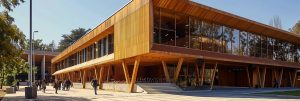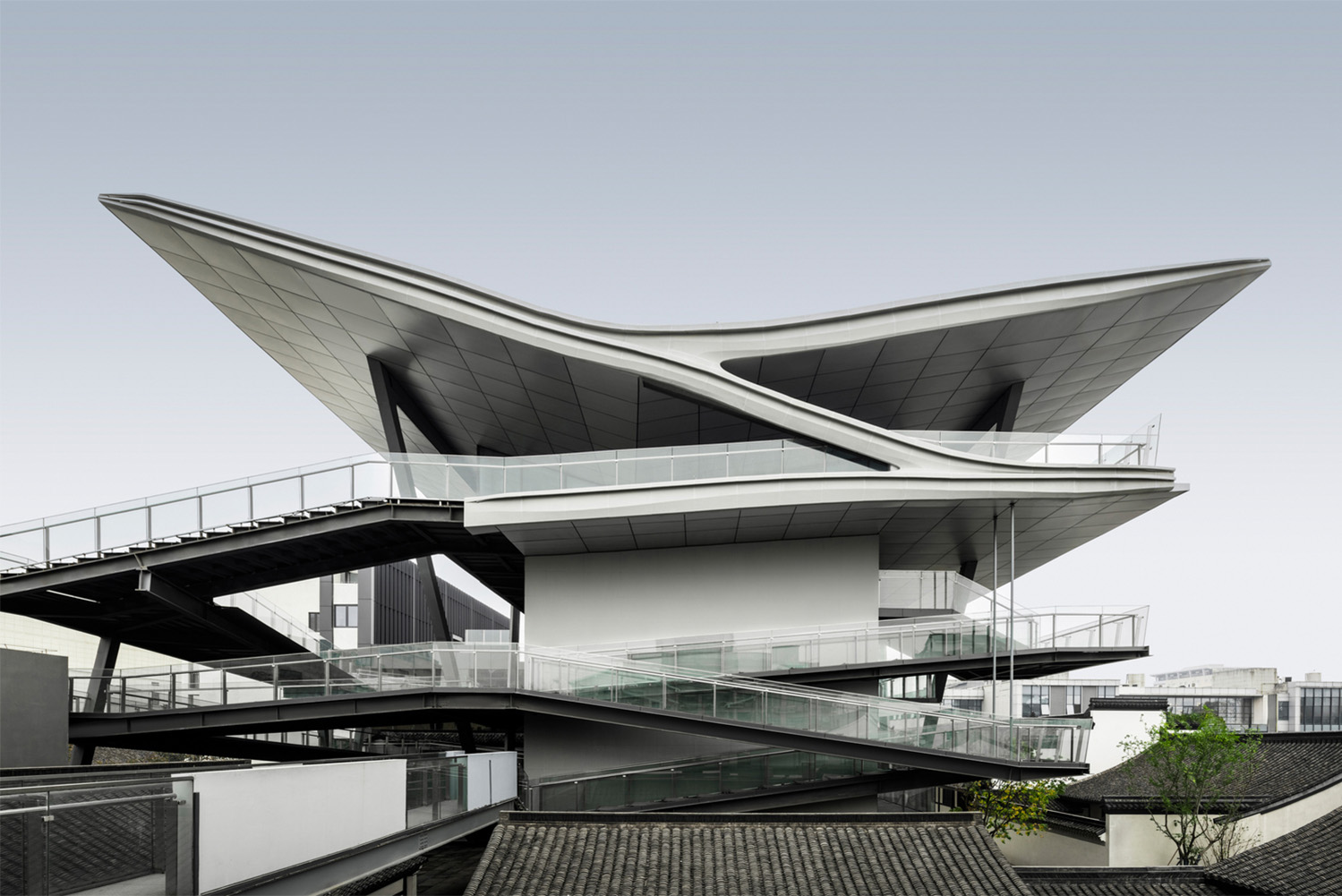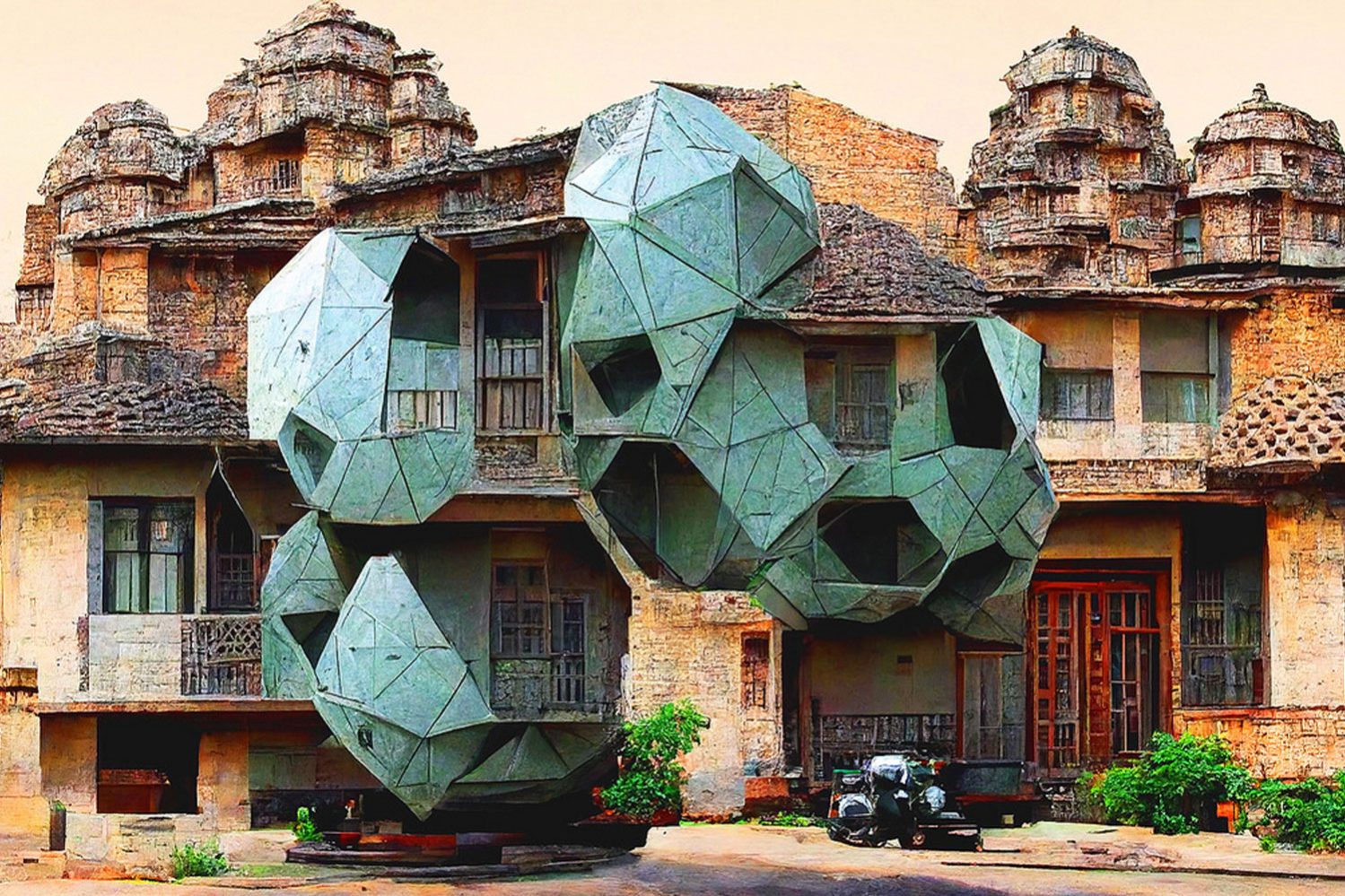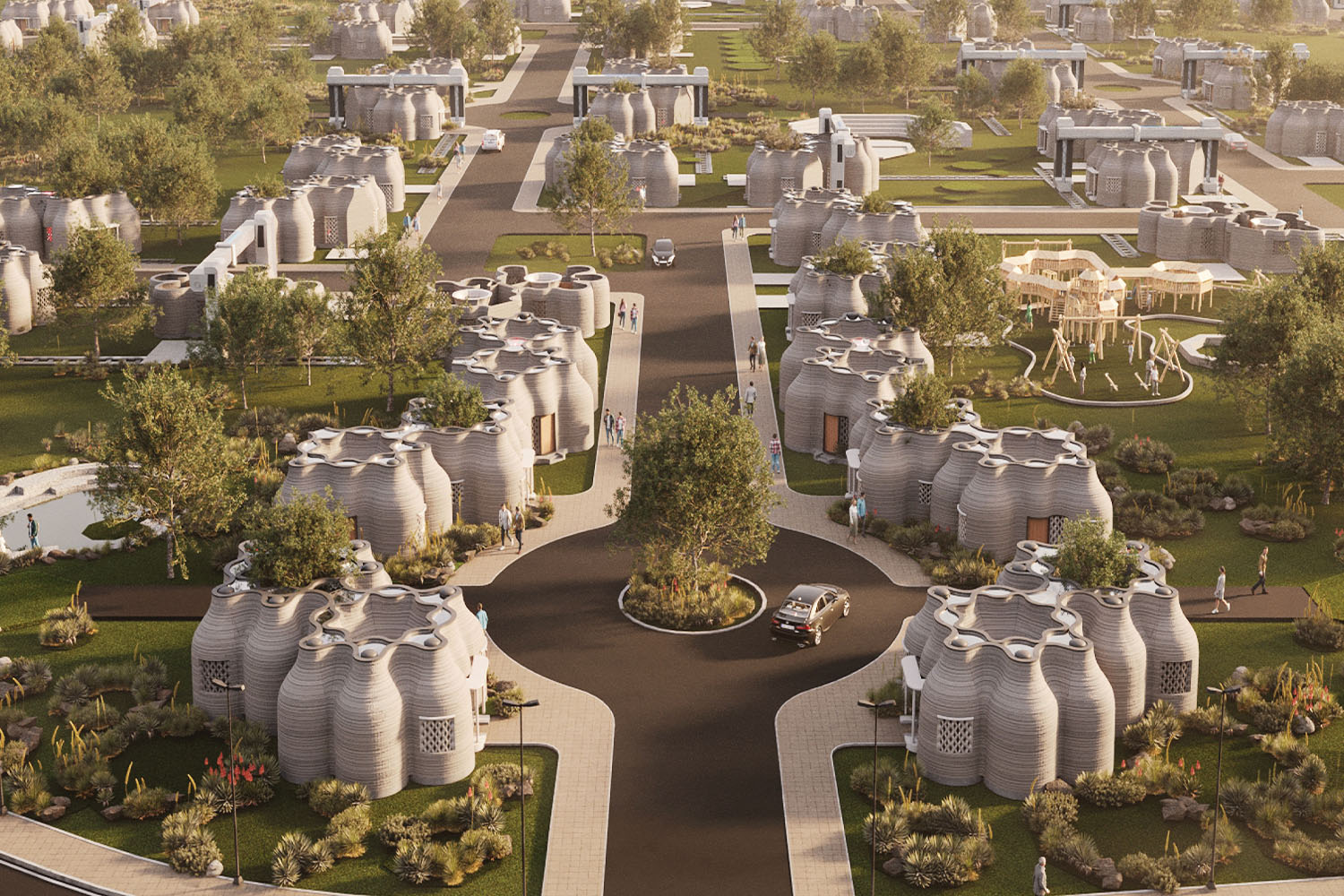
The AI Radiata Pine Building concept was created by architect Rolando Cedeño de la Cruz. More and more architects are turning to structural laminated wood (GLT) due to its many benefits, such as durability, dimensional stability, thermal and acoustic resistance, and the ability to create comfortable and aesthetically pleasing spaces. Additionally, wood is a renewable resource that can be used sustainably, and it emits less CO2 during extraction and handling compared to materials such as steel and concrete.
As a result, there are many modern wooden architecture projects and proposals in countries like Norway, Sweden, London, and Chile. Chile has implemented policies to promote sustainable forest management and reforestation, including the certification of wood under international standards like FSC (Forest Stewardship Council) to ensure responsible production practices. Radiata pine, a species known for its rapid growth and versatility, is the most commonly used wood in Chile, particularly in the southern regions.

“It is at this point where I decided to combine my experience as an architect with advanced Artificial Intelligence tools to develop large-scale structural wood building complexes in the beautiful Chilean landscape. In this case, I decided to address the concept of educational buildings and university campuses where the clear and powerful expression of wooden volumetry welcomes students, teachers, and visitors in a warm and dynamic way,” states Architect Rolando Cedeño de la Cruz.
The language of beams, panels, columns, louvers, bridges, and cantilevers is intertwined with the play of shadows, becoming a delight for the journey and visual exploration. Furthermore, the landscape of araucarias and other tree species in the south becomes an accomplice of AI Radiata Pine Building, opposing them horizontally.

“I would dare to say that the use of wood on this scale humanizes learning spaces and connects us all more with the natural environment. Likewise, the implementation of ‘passivhaus’ bioclimatic systems in the conceptualization of these buildings will optimize energy efficiency and provide greater comfort throughout the year, just as renowned pioneer architects in Chile have already done.”
All these studies assisted with AI tools are in their initial phase and are just a sketch of the advances that can be achieved in exploring wood as a large-scale architectural language.














































